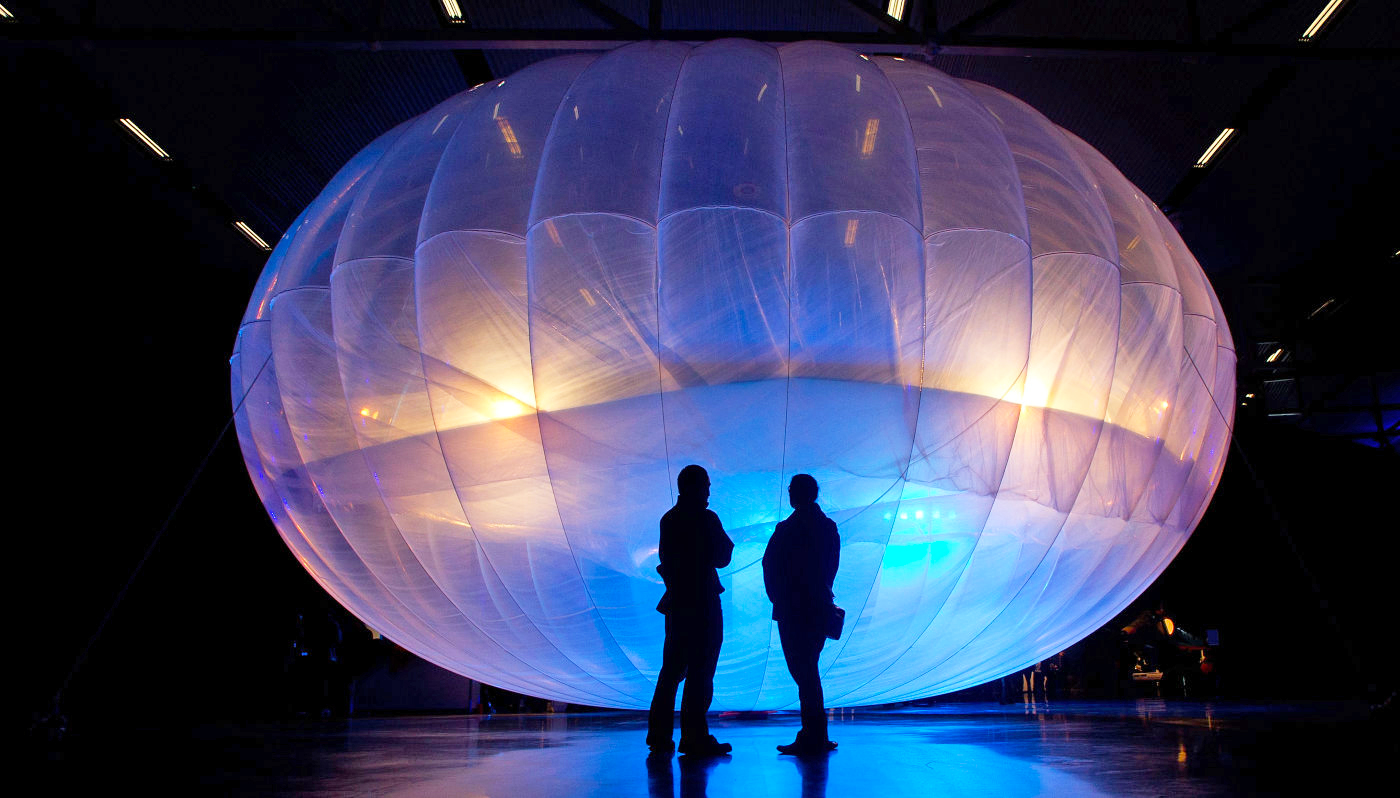
No, we're not joking. Google is seriously proposing hot air ballon-powered internet access, and has already launched a pilot project in New Zealand with 50 testers trying to connect via a helium-filled, solar powered balloon. One of the Google[x] moonshot projects, there are a couple of videos embedded after the break explaining the issue, and the technology Google wants to use to address it. Project Loon's playful logo reflects the custom designed antennas users will use to receive their signal from balloons floating twice as high as commercial airplanes fly. The signal goes from ground based antennas, up to the balloon, which use their high-altitude placement to broadcast much further than other methods. In the future, the company envisions cell phone users connecting to the balloons to extend service where none exists today.
According to Google, in "more than half" of the countries in the southern hemisphere and for two out of three people on earth, internet access is far too expensive. It's trying to set up pilot projects in other countries on the same latitude as New Zealand, so interested 40th parallel south residents should forward this info to the appropriate officials immediately. Meanwhile, curious Kiwis can sign up to take part in the project on its website, or attend the Festival of Flight in Christchurch on Sunday to meet the team and learn more about it.
Update: Check out another video of the launch of the first balloons embedded after the break, shot via Google Glass by Trey Ratcliff and see even more photos on his site Stuck in Customs.
Filed under: Internet, Google
Comments
Source: Google Blog, Project Loon (Google+), Project Loon
 Google asserted in a report filed to the Federal Communications Commission that the company's upcoming high-altitude, wireless signal tests (likely part of Google's Project Loon) pose no threat to the citizenry or the environment. The internet giant...
Google asserted in a report filed to the Federal Communications Commission that the company's upcoming high-altitude, wireless signal tests (likely part of Google's Project Loon) pose no threat to the citizenry or the environment. The internet giant...
 Google asserted in a report filed to the Federal Communications Commission that the company's upcoming high-altitude, wireless signal tests (likely part of Google's Project Loon) pose no threat to the citizenry or the environment. The internet giant...
Google asserted in a report filed to the Federal Communications Commission that the company's upcoming high-altitude, wireless signal tests (likely part of Google's Project Loon) pose no threat to the citizenry or the environment. The internet giant...
 Google's Project Loon has big plans for 2016, including its first round-the-world coverage. Its vice president, Mike Cassidy, told the BBC that the team is hoping to launch 300-plus balloons next year to "make a continuous string around the world."...
Google's Project Loon has big plans for 2016, including its first round-the-world coverage. Its vice president, Mike Cassidy, told the BBC that the team is hoping to launch 300-plus balloons next year to "make a continuous string around the world."...



